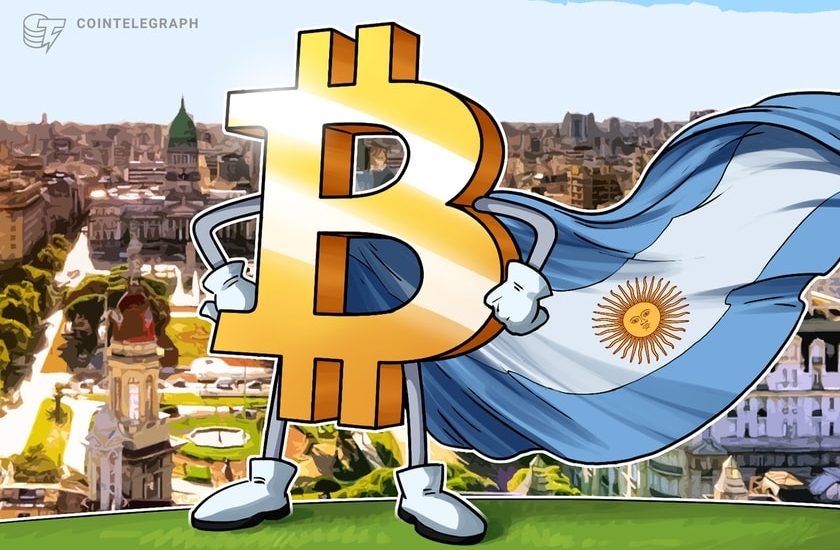- September 22, 2023
- Posted by: admin
- Category: BitCoin, Blockchain, Cryptocurrency, Investments


Bitcoin’s 150% gains over the last two years in Argentine pesos is no match for the country’s 300% inflation in the period.
Argentina has grappled with hyperinflation for several decades due to failed policies that have led to budget deficits. As time marches on, the likelihood of Argentina — home to 47 million people — facing a full-scale currency collapse looms. But what are the prospects for increased adoption of Bitcoin (BTC), given its outstanding track record when priced in the local Argentine peso currency?
Throughout its history, the Argentine government has frequently resorted to inflating the money supply through bank deposits or government bonds. Notably, Argentina’s aggregate money supply M1 — comprising currency, demand deposits and other checkable deposits — has surged from 2.81 trillion pesos in July 2019 to a staggering 10.66 trillion pesos, marking a 277% increase over three years.
What happened to Bitcoin’s price in Argentine pesos?
Bitcoin’s price on domestic exchanges has soared to 19.6 million Argentine pesos, up from 14.2 million when BTC reached its all-time high in United States dollars in November 2021. This means that despite a 61.5% drop from $69,000, investors in Argentina have still managed to accrue gains of 38% when measured in the local currency.

However, one may encounter a different result when consulting Google or CoinMarketCap for Bitcoin’s price in pesos. The answer to this discrepancy lies in the official currency rate for the Argentine peso, which is more intricate than most investors are accustomed to.
To begin with, there is the official rate, known as the “dollar BNA,“ set by Argentina’s central bank and used for all government transactions, as well as for imports and exports.

Observe how the Bitcoin price in Argentine pesos, as effectively traded on cryptocurrency exchanges, is nearly double Google’s theoretical price.
This theoretical price is calculated by multiplying the BTC price on North American exchanges in U.S. dollars by the official Argentine peso rate provided by the local government. This phenomenon is not unique to cryptocurrencies; it also affects other highly liquid international assets, such as stocks, gold and oil futures.
By artificially strengthening the official rate in favor of the Argentine peso, the government aims to stabilize the economy, reduce capital flight, and curb speculative trading by making it more expensive to purchase foreign currency and store wealth in U.S. dollars. This measure may also increase the cost of imports while boosting exports, with the goal of improving the trade balance.
Related: Bitcoin soars in Argentina as Javier Milei wins presidential primary
However, manipulating the official foreign exchange rate, as seen in Argentina’s case, ultimately contributes to inflation and impedes economic growth. Firstly, it creates incentives for the existence of an unofficial and unregistered market, known as the “dollar blue,” which also fosters illegal activities, undermines financial transparency and discourages foreign investment.
This leads to varying exchange rates, depending on the market in which the transaction occurs and whether or not it involves the government and official banks.
Is Bitcoin a reliable store of value for investors in Argentina?
According to Bitso exchange prices in Argentine pesos, Bitcoin has gained 150% over the two years ending Sept. 21, moving from 7.84 million pesos to 16.6 million pesos. However, the accumulated official inflation rate during this period has exceeded 300%, making it incorrect to claim that Bitcoin has been a dependable store of value.
Notably, those who opted for U.S. dollars, whether in the traditional form or stablecoins, have seen their holdings increase by 297% during the same period, effectively matching the inflation rate. This analysis exclusively compares the two-year period between September 2021 and September 2023.
Nonetheless, the outcome is somewhat disappointing for BTC proponents and is likely to favor the adoption of stablecoins in the region.
On a positive note, investors have had the opportunity to learn about the advantages of self-custody and scarcity, given that the local currency has been decimated by its continuously inflating supply.
In the end, for Argentinians, as long as the U.S. dollar maintains its purchasing power by keeping pace with local inflation, there is little room for Bitcoin to become the preferred store of value.
This article is for general information purposes and is not intended to be and should not be taken as legal or investment advice. The views, thoughts, and opinions expressed here are the author’s alone and do not necessarily reflect or represent the views and opinions of Cointelegraph.
